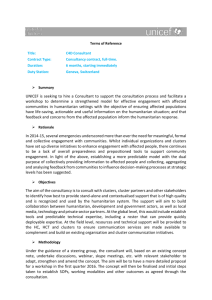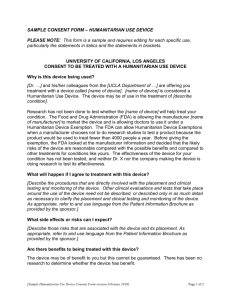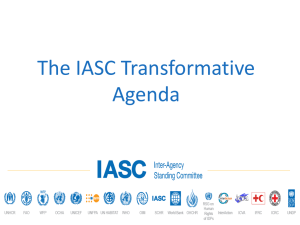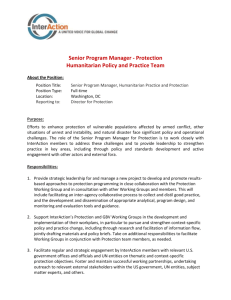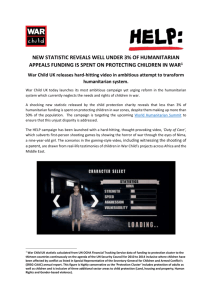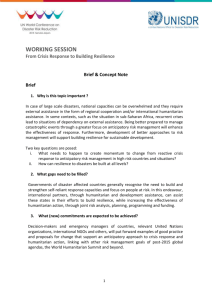Key issues in planning a humanitarian response
advertisement
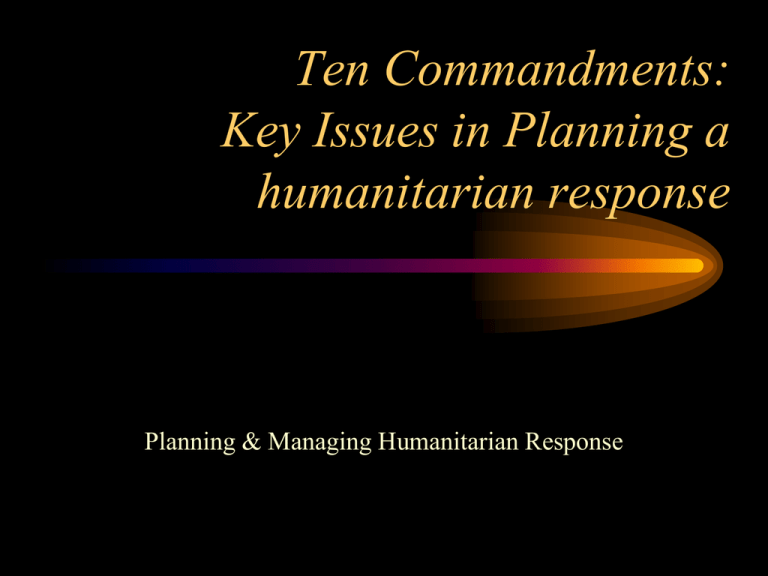
Ten Commandments: Key Issues in Planning a humanitarian response Planning & Managing Humanitarian Response • The world faced 200 natural calamities in the 2nd half of the 20th century. •More than 1.4 million people lost their lives in these disasters • 90% of the casualties resulted from the floods & cyclones • During 1991-2002, 5,31,159 persons were killed by natural disasters (Center for Research on Epidemology of Disasters(CRED) Belgium) • 26th Dec. 2003, Bam Earthquake claimed 26271 lives • 26th Dec. 2004, Asian Tsunami resulted in more than 1,75,000 casualties • From January to October 2005 some 97,490 people died because of disasters around the world, 88,117 of them because of natural disasters. •(Photo by Armando Waak/PAHO) *Source: BMTPC Vulnerability Atlas of India Key Issues in Planning a Humanitarian Response 1. Identify Needs So that appropriate measures could be adopted Key Issues in Planning a Humanitarian Response 2. Get right people at right places Key Issues in Planning a Humanitarian Response 3.Define Responsibilities • In such a way that a clear role is outlined for every individual within an operation & appropriate coordination mechanism is established. Key Issues in Planning a Humanitarian Response 4. Be Flexible & Respond to Changing Needs & Aspirations • What is appropriate now, may vary with time! Key Issues in Planning a Humanitarian Response 5. Identify Standards • Standards reflect special needs • Basic minimum must be given. Key Issues in Planning a Humanitarian Response 6. Always Remember Longer Term Objectives Key Issues in Planning a Humanitarian Response 7. Involve People…at all stages of planning & implementation Key Issues in Planning a Humanitarian Response 8. Be Aware of SocioEconomic Roles of Men, Women & Children • How they will affect & be affected by the planned activities... Key Issues in Planning a Humanitarian Response 9. Do Not Treat Issues In Isolation • Practice a Multi-sectoral approach • Coordinate,coordinate,coordinate Key Issues in Planning a Humanitarian Response 10. Monitor & Evaluate Effectiveness of Response






